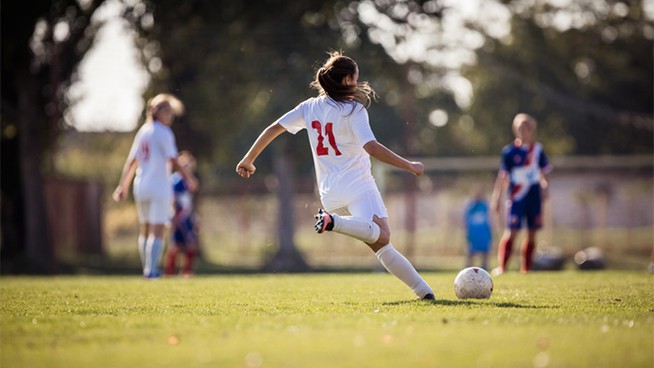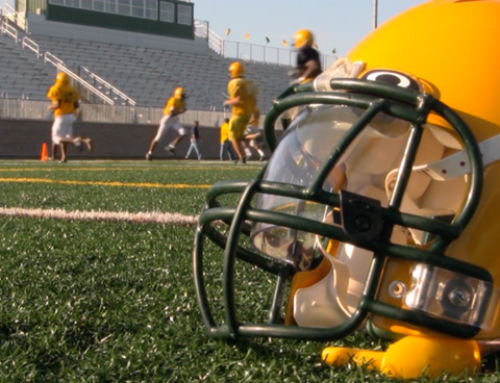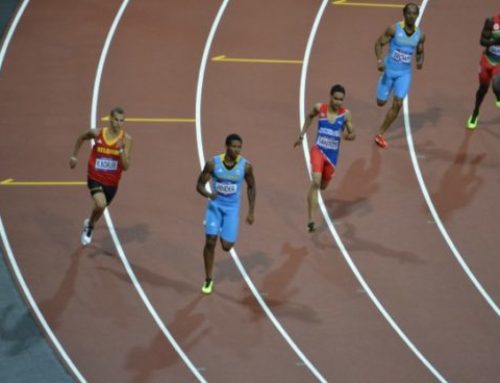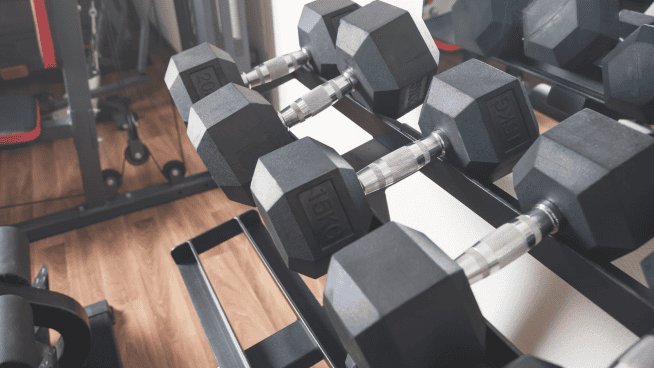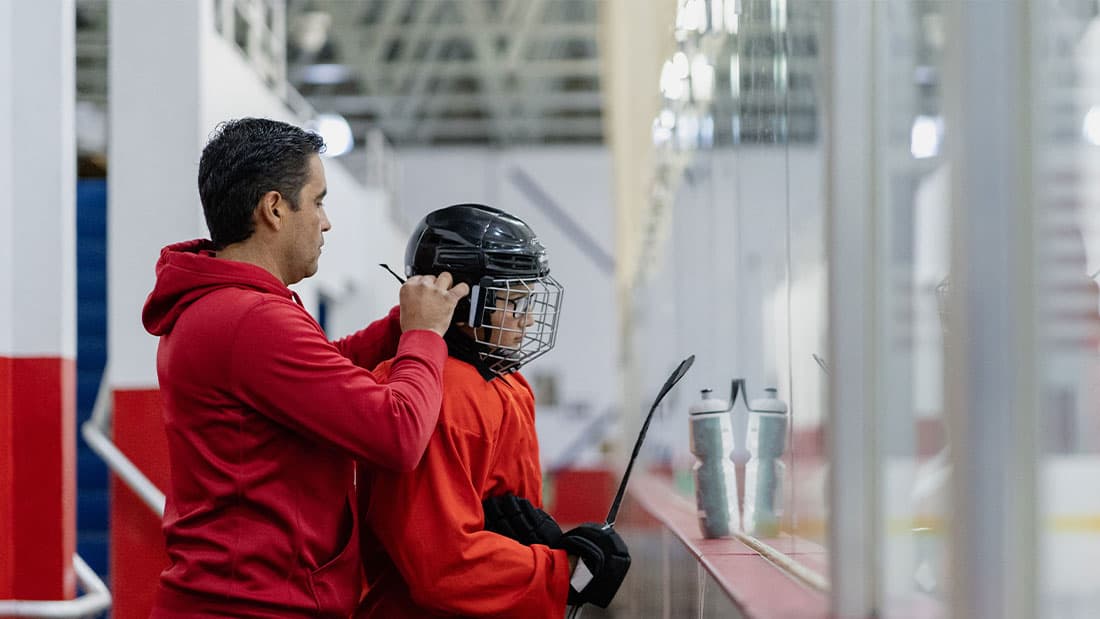40-Yard Dash: The First 10 Yards
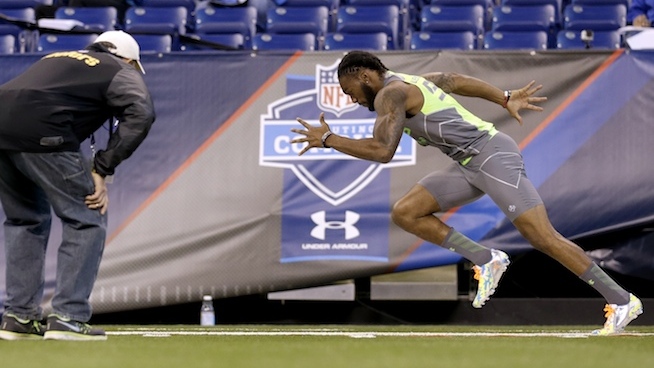
AP Images
The 40-Yard Dash is pretty much the king of football combine tests. It’s the one test that can determine whether you make it to the next level, regardless of how you do in the other tests. And the first 10 yards will make or break you. If you stand up too fast, aren’t explosive enough, are too tense or make any other mistakes, your time will most certainly reflect this, and it won’t be good.
Every detail matters. Here are some tips to help you improve your start.
Starting Position
Very few athletes can mess up their start position and still run a blazing fast time. Taylor Mays managed to run a 4.24-second 40-Yard Dash at the 2010 NFL Combine despite having his arm position wrong, but I haven’t seen anyone else able to do that.
Also, many athletes line up for their 40 test either too far away from the line or too bunched up. Here are a few steps to ensure your start position is just right.
- If you’re right-handed, your left foot goes forward. If you’re left-handed, your right foot is forward.
- Your front foot should be 6 to 8 inches away from the starting line. If you are a shorter athlete, your foot may be a little closer. If you are tall (6-foot-6 or taller), your feet may be slightly farther back, but not much. I teach my athletes to place the toes of their back foot at the edge of the start line, then line up the toes of the lead foot with either the ball of the ankle or the heel of the other foot. Do not move that foot after you have this placement.
- The toes of the back foot should be approximately even with the heel of the front foot. Again, this may be slightly different depending on your leg length. What I generally teach is that when you assume a kneeling position, the knee of the back leg should touch right at the start line, maybe slightly over it. This is your best start position.
- Place your feet hip-width apart.
- If your left foot is forward, your right hand goes down. If your right foot is forward, your left hand goes down. Place your hand as close to the line as you can without going over it, or the person monitoring the drill will penalize you and your time will not count. You want to take away as much distance as possible right from the start.
- Assume a good forward lean and keep your head down. You should feel almost like you’re going to fall forward. Looking up will cause your torso to rise up, and that will kill your time instantly.
- Keep your non-starting hand low. Don’t raise it up high behind you. Time starts on your first movement. Don’t let the monitor start the time on that hand.
- Put all your weight on your front hand and front foot. You should not have any weight on your back foot. It will feel awkward at first, but you will get used to it.
First Step
Your first step should be explosive. Fire with as much force and drive as possible. The length of your first step also matters. Strive for a big step out of the gate—not a small, choppy one. If you can take a first step of one yard, you are on the right track. With that big, explosive first step, you should also have a powerful arm drive to help propel you forward.
Here are a few drills you can do to help improve your first step and arm drive.
Practice. The best way to get used to your start position and exploding out of it is to practice doing it. Place a cone one yard in front of you. Every time you explode out of your start, try to reach the cone with your first step. Practice until it starts to feel natural and you no longer need the cone to help you reach that distance.
Mountain Climbers with sprint finish. Assume a mountain climber position with your lead foot forward. Perform 4 to 6 mountain climbers, then explode out of that position into a 5-yard all-out sprint. Keep your head down and stay low.
Push-Up to sprint. Perform a Push-Up and explode into a 5-yard sprint. The focus is still on achieving a big, explosive first step!
Drive Phase
The first 10 yards of your 40-Yard-Dash are known as the “drive phase.” This is where you maintain a good forward lean, keep your head down, maintain a low body position and “drive” your legs as explosively and powerfully as possible to help you get into the next phase of the dash. Here are some drills.
10-Yard Starts. Use a camera to record yourself running 10-yard sprints, so you can see if you are staying low, keeping your head down, achieving a good first step and sprinting as hard as you can. You should be able to cover the first 10 yards in 5 to 8 steps.
Prowler Pushes. The Prowler sled is an amazing tool for developing short-distance power and speed. Load the sled with weight that won’t be a massive struggle to move, but isn’t easy either. Grab the poles low and assume a low, forward-leaning position with your head down. Start with your lead foot forward and sprint 10 yards as fast as you can while pushing the sled. This will not only teach you to stay low, it will also teach you to brace your core and breathe during the sprint.
Sled Drags. Rather than pushing a sled, try dragging it. I like to hook up a TRX strap because it attaches easily and has handles. Get to the starting line holding the handles behind your back and sprint 10 yards. Do not swing your arms in this drill. Instead, use your hands to hold the handles behind you to pull the sled.
Plyometrics. Let’s face it—the first 10 yards of the 40-Yard-Dash are all about power and explosiveness. What better way to develop that than with plyometrics? You should be able to take the explosive aspect of a plyometric exercise and directly apply it to your explosion out of your start position. From there, each and every step should be just as explosive, with you creating as much force against the ground as possible. This will allows you to accelerate quickly and run a faster 40.
Read More:
[cf]skyword_tracking_tag[/cf]RECOMMENDED FOR YOU
MOST POPULAR
40-Yard Dash: The First 10 Yards

AP Images
The 40-Yard Dash is pretty much the king of football combine tests. It’s the one test that can determine whether you make it to the next level, regardless of how you do in the other tests. And the first 10 yards will make or break you. If you stand up too fast, aren’t explosive enough, are too tense or make any other mistakes, your time will most certainly reflect this, and it won’t be good.
Every detail matters. Here are some tips to help you improve your start.
Starting Position
Very few athletes can mess up their start position and still run a blazing fast time. Taylor Mays managed to run a 4.24-second 40-Yard Dash at the 2010 NFL Combine despite having his arm position wrong, but I haven’t seen anyone else able to do that.
Also, many athletes line up for their 40 test either too far away from the line or too bunched up. Here are a few steps to ensure your start position is just right.
- If you’re right-handed, your left foot goes forward. If you’re left-handed, your right foot is forward.
- Your front foot should be 6 to 8 inches away from the starting line. If you are a shorter athlete, your foot may be a little closer. If you are tall (6-foot-6 or taller), your feet may be slightly farther back, but not much. I teach my athletes to place the toes of their back foot at the edge of the start line, then line up the toes of the lead foot with either the ball of the ankle or the heel of the other foot. Do not move that foot after you have this placement.
- The toes of the back foot should be approximately even with the heel of the front foot. Again, this may be slightly different depending on your leg length. What I generally teach is that when you assume a kneeling position, the knee of the back leg should touch right at the start line, maybe slightly over it. This is your best start position.
- Place your feet hip-width apart.
- If your left foot is forward, your right hand goes down. If your right foot is forward, your left hand goes down. Place your hand as close to the line as you can without going over it, or the person monitoring the drill will penalize you and your time will not count. You want to take away as much distance as possible right from the start.
- Assume a good forward lean and keep your head down. You should feel almost like you’re going to fall forward. Looking up will cause your torso to rise up, and that will kill your time instantly.
- Keep your non-starting hand low. Don’t raise it up high behind you. Time starts on your first movement. Don’t let the monitor start the time on that hand.
- Put all your weight on your front hand and front foot. You should not have any weight on your back foot. It will feel awkward at first, but you will get used to it.
First Step
Your first step should be explosive. Fire with as much force and drive as possible. The length of your first step also matters. Strive for a big step out of the gate—not a small, choppy one. If you can take a first step of one yard, you are on the right track. With that big, explosive first step, you should also have a powerful arm drive to help propel you forward.
Here are a few drills you can do to help improve your first step and arm drive.
Practice. The best way to get used to your start position and exploding out of it is to practice doing it. Place a cone one yard in front of you. Every time you explode out of your start, try to reach the cone with your first step. Practice until it starts to feel natural and you no longer need the cone to help you reach that distance.
Mountain Climbers with sprint finish. Assume a mountain climber position with your lead foot forward. Perform 4 to 6 mountain climbers, then explode out of that position into a 5-yard all-out sprint. Keep your head down and stay low.
Push-Up to sprint. Perform a Push-Up and explode into a 5-yard sprint. The focus is still on achieving a big, explosive first step!
Drive Phase
The first 10 yards of your 40-Yard-Dash are known as the “drive phase.” This is where you maintain a good forward lean, keep your head down, maintain a low body position and “drive” your legs as explosively and powerfully as possible to help you get into the next phase of the dash. Here are some drills.
10-Yard Starts. Use a camera to record yourself running 10-yard sprints, so you can see if you are staying low, keeping your head down, achieving a good first step and sprinting as hard as you can. You should be able to cover the first 10 yards in 5 to 8 steps.
Prowler Pushes. The Prowler sled is an amazing tool for developing short-distance power and speed. Load the sled with weight that won’t be a massive struggle to move, but isn’t easy either. Grab the poles low and assume a low, forward-leaning position with your head down. Start with your lead foot forward and sprint 10 yards as fast as you can while pushing the sled. This will not only teach you to stay low, it will also teach you to brace your core and breathe during the sprint.
Sled Drags. Rather than pushing a sled, try dragging it. I like to hook up a TRX strap because it attaches easily and has handles. Get to the starting line holding the handles behind your back and sprint 10 yards. Do not swing your arms in this drill. Instead, use your hands to hold the handles behind you to pull the sled.
Plyometrics. Let’s face it—the first 10 yards of the 40-Yard-Dash are all about power and explosiveness. What better way to develop that than with plyometrics? You should be able to take the explosive aspect of a plyometric exercise and directly apply it to your explosion out of your start position. From there, each and every step should be just as explosive, with you creating as much force against the ground as possible. This will allows you to accelerate quickly and run a faster 40.
Read More:


